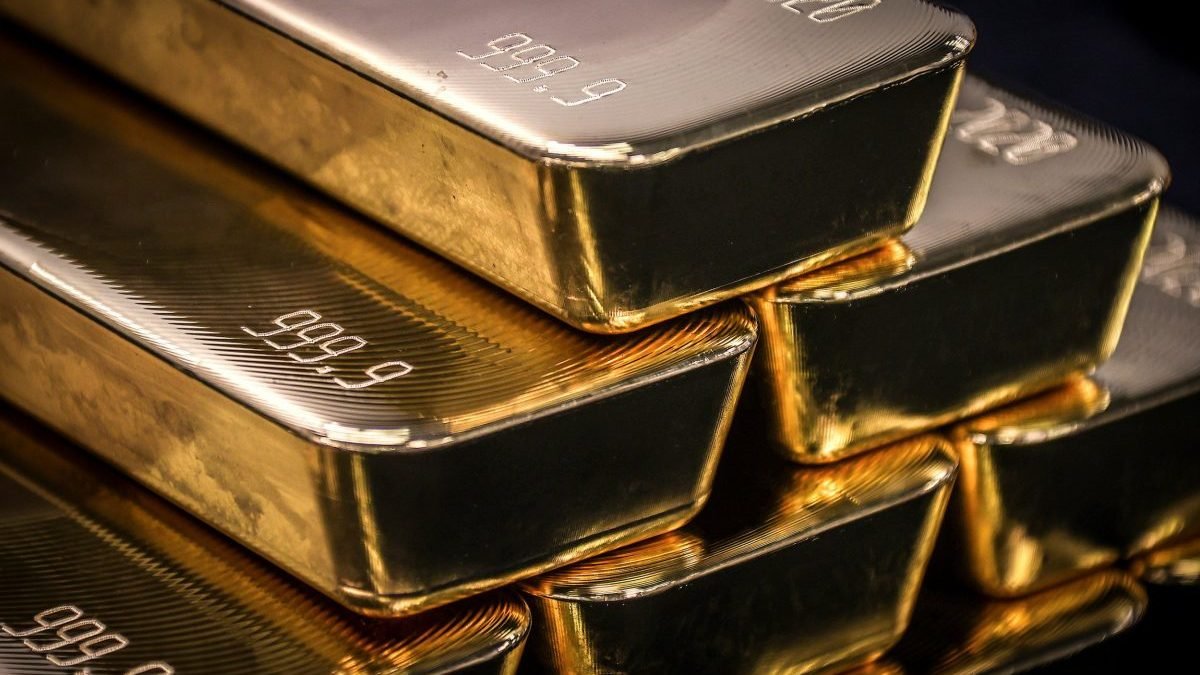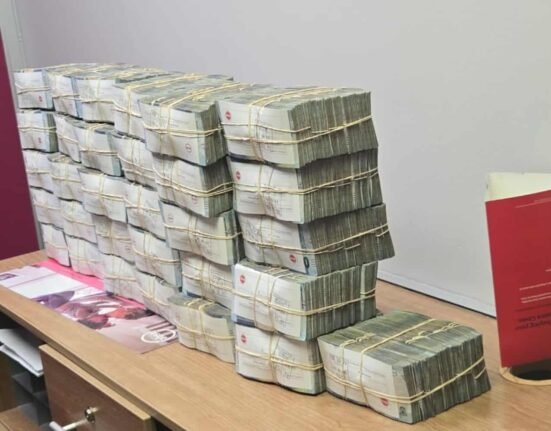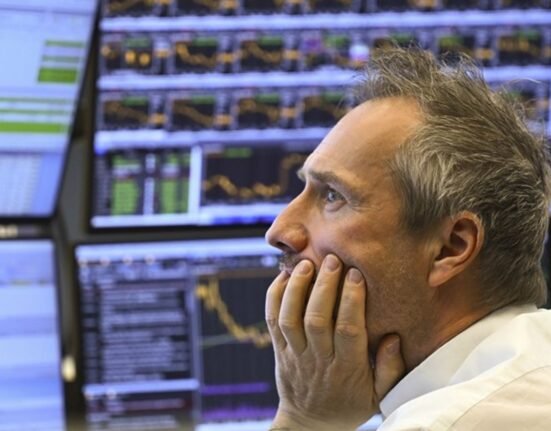The precious metal jumps $3,000 barrier for first time as investors worldwide seek safe haven from Trump chaos
The price of gold has reached a record high, breaking through $3,000 an ounce as investors rush to find safe-haven assets amid the economic chaos brought about by Donald Trump’s tariff trade war.
Gold rose by 0.5 per cent to reach $3,004.86 an ounce, the first time it has passed the key $3,000 barrier.
John Reade of the World Gold Council (WGC) said its strong price run has been sparked by the uncertainty created by Trump’s tariff policies.
Investors are using the precious metal as a way of hedging or limiting the risks of volatile markets and inflation.
If the dollar loses value from the effects of inflation, gold tends to become more expensive. In the event of a global recession, gold remains valuable because of the ease of cashing it in when markets are down.
Political tension is also spurring safe-haven demand. Russia rejected an immediate truce in Ukraine at the same time as countries in Europe are discussing boosting defence spending and their militaries.
Why is the price of gold soaring?
Investors
Demand from investors has increased 25 per cent according to the WGC, to 1,180 tons – a four-year high – driven by a revival in gold-backed exchange-traded funds. These saw strong growth last year, with 19 tons bought up in the final quarter of last year. Demand for physical gold bars and coins remained largely the same as in 2023, with volumes of 1,186 tons in 2024.
Central banks
Another reason for the record prices is unprecedented demand from central banks around the world. They are buying gold for similar reasons to individual investors, the only difference being they buy in bulk. The WGC said such purchases last year exceeded 1,000 tons for the third year in a row. Buying ramped up sharply in the last three months of2024, as the result of the US Presidential election became clear, reaching 333 tons and bringing the annual central bank total to 1,045 tons.
Russia
Also driving demand is the fate of Russia after its invasion of Ukraine. The decision of Western countries to hit Moscow with punitive financial sanctions has convinced some countries it might not be wise to hold assets that are easy to seize – instead turning to physical assets such as gold.
“The decision to place sanctions on Russia’s central bank reserves in 2022 represented a point of no return, and suggests that, in the future, any country that finds itself in strong political disagreement with the West could implicitly run the risk of seeing its assets confiscated”, says Peter Kinsella, at Union Bancaire Privée. “As a result, the central banks around the world have been increasing their gold reserves and this trend is likely to continue”.
Some developing countries have put forward a project to create a new currency pegged to gold to be used for trade instead of the US dollar, in a bid to reduce America’s control. Trump has threatened 100 per cent tariffs for those adopting it.
Will gold prices rise even more?
The only way is up, according to most analysts. “We see uncertainty over trade and tariffs continuing to buoy gold prices, and if trade tensions intensify and we see more retaliatory measures, safe-haven demand for gold will continue,” analysts at Dutch bank ING have told its clients.
French bank BNP Paribas has also forecast higher prices to come, saying: “Trump tariff chaos and geopolitical shifts… have added a new layer of macroeconomic and geopolitical uncertainty, providing a significant boost to gold.”
Joni Teves, precious metals expert at Swiss-based UBS, said: “The potential for slower growth, higher inflation has been a key reason investors have turned to gold this year.”
She believes gold will peak at $3,100 before the end of the year. “There’s still a strong case for investors to add gold to their investment porfolios as a diversifier. If we get to a point where stagflationary fears start to gain momentum, that creates upside risks for gold.”
Investors are listening, according to Adrian Ash, of BullionVault. In February, the online bullion market saw the number of new investors rising to its highest count since May 2021. The number of people starting or adding to their gold holdings increased bu a third.
How do I invest in gold?
The Royal Mint says that before buying gold as an investor, the purchaser should decide in what form they plan to hold the gold and where they choose to buy it from.
The main choice is between physical gold and a digital or paper version. The commonest physical form is jewellery but bars,ingots or coins can also be purchased from banks or bullion dealers, or over the internet – where charges may be cheaper, but checking the provenance of the seller and the quality of the product can be a fraught process.
Buying coins and small bars is popular but costly. The price consumers pay for these is typically 5 to 8 per cent higher than the spot price.
When you sell, you’ll usually receive a similar amount less than the current price.
Shipping is not always included, and investors need to remember the additional cost of home insurance – as a consequence of keeping gold in your property.
The alternative is to buy the gold digitally, with the gold remaining stored and insured in a professional vault through companies such as BullionVault.
Digital gold offers direct ownership of real, physical gold without the delivery or fabrication fees associated with coins and bars. The other advantage is that unlike the physical version, consumers can purchase based on value rather than weight, that is to say, for example, £25 of gold instead of a one-ounce coin or bar.
Royal Mint also points out the difference between bullion coins and commemorative coins that carry a premium because of their value and appeal to coin collectors. Bought as a monetary asset, the standard bullion coins offer a lower premium over the precious metal value contained in them.







